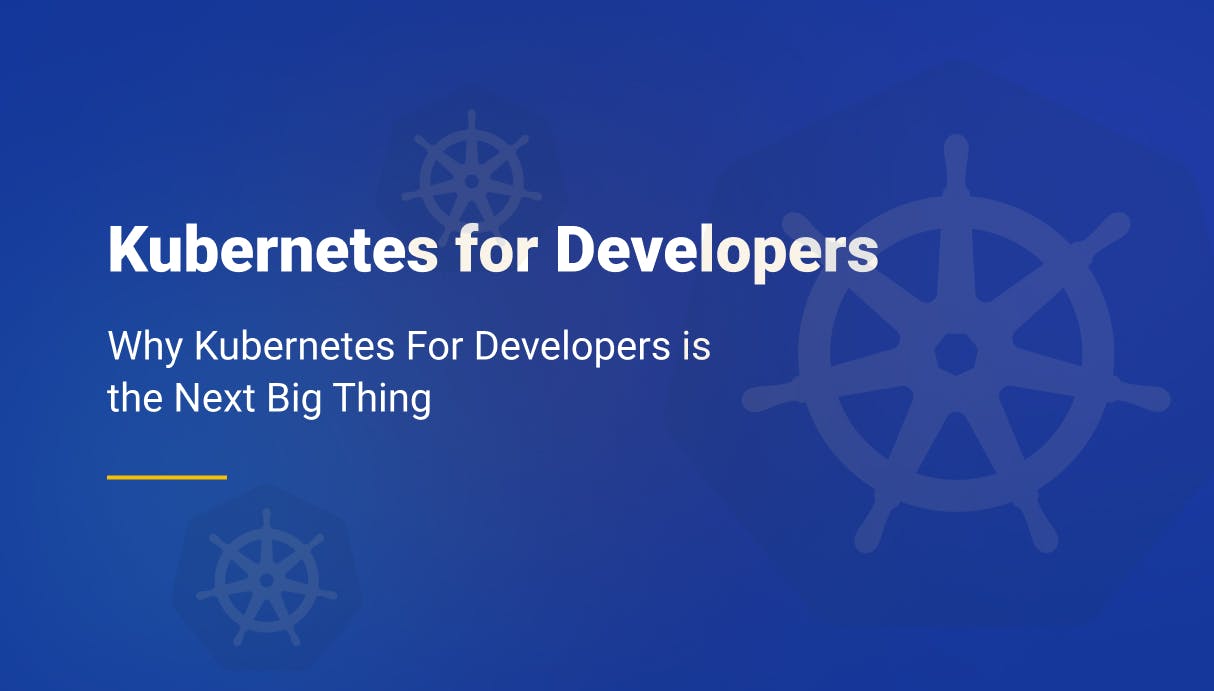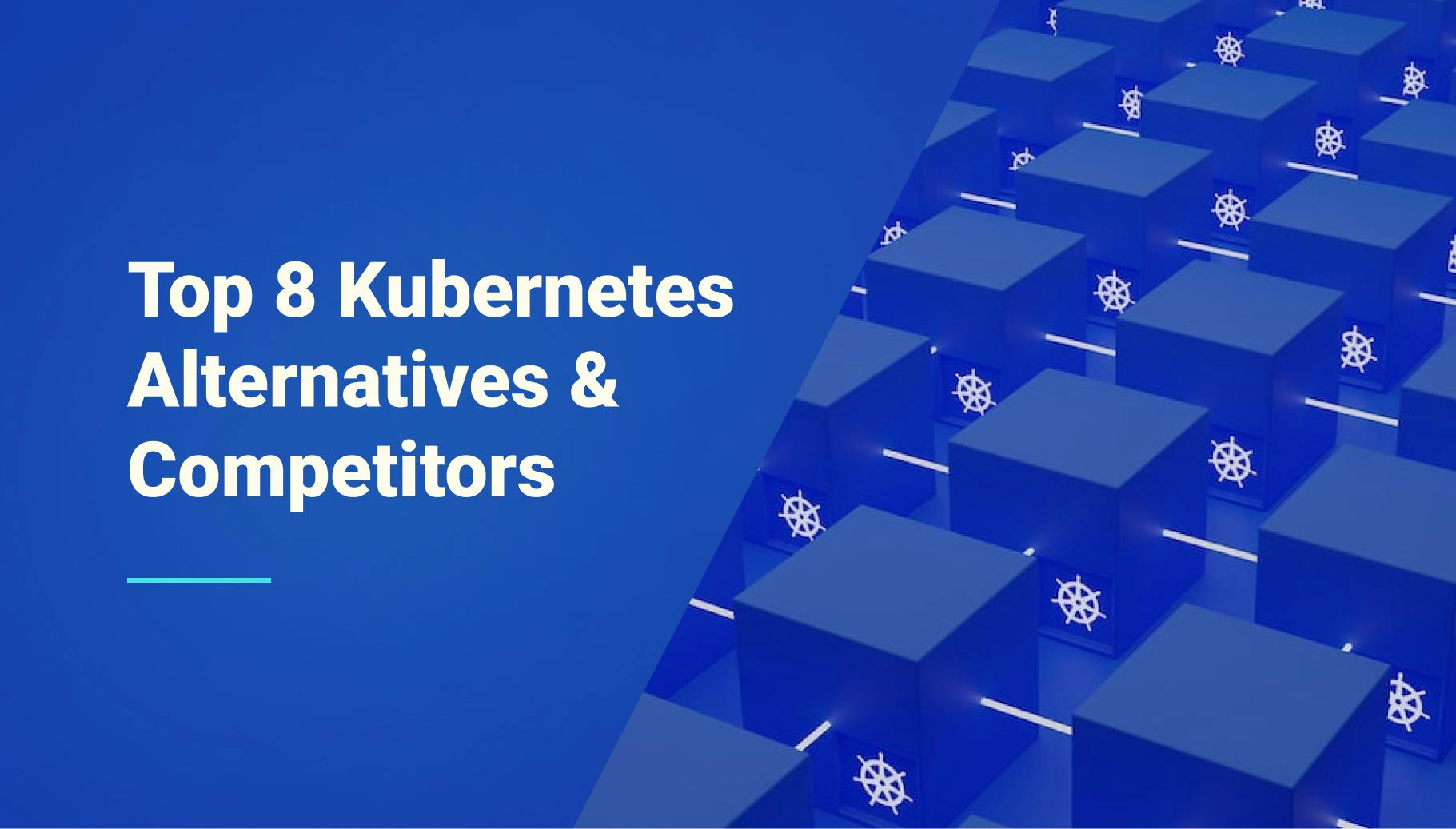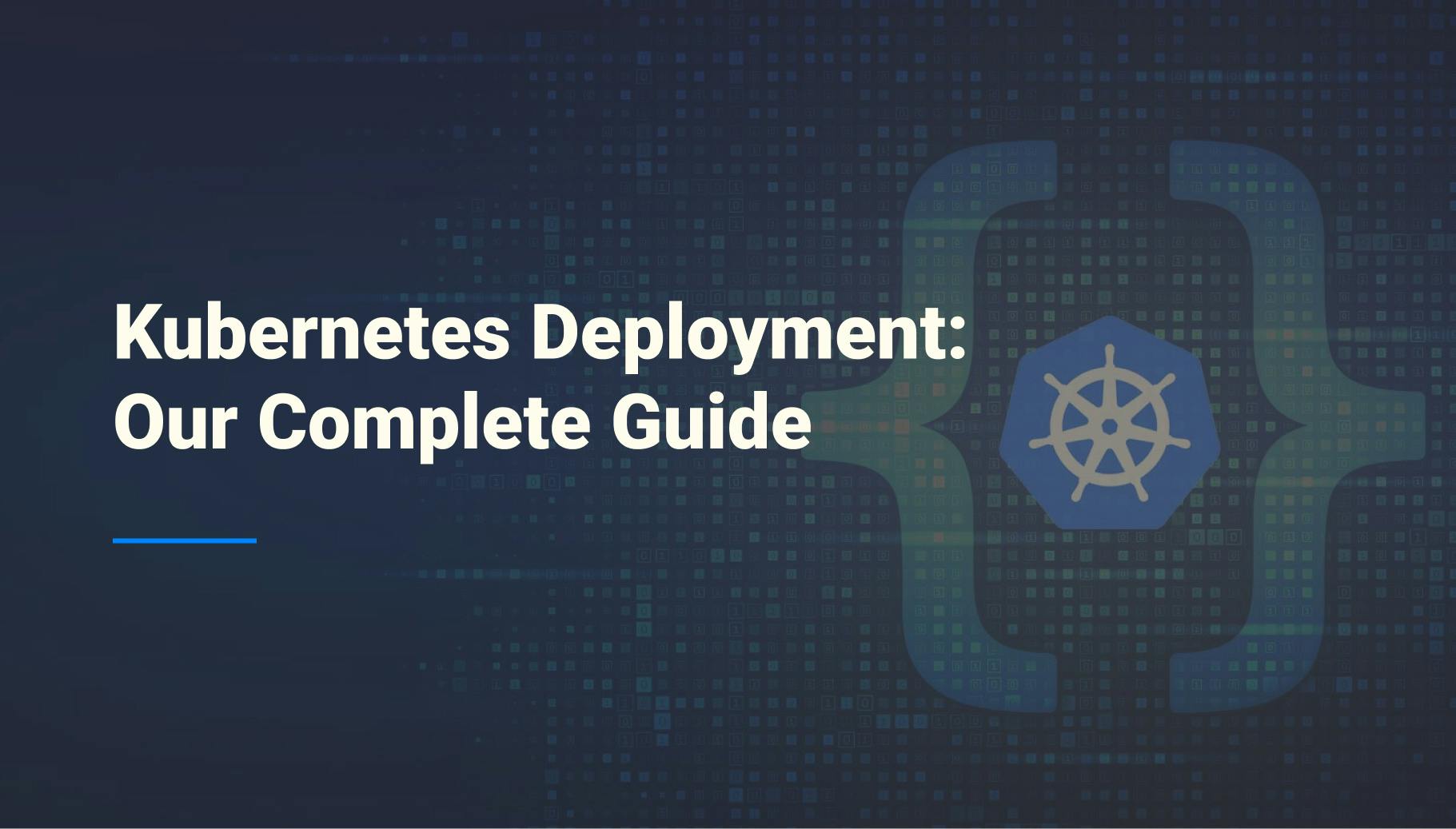What Is Kubernetes? What You Need To Know As A Developer
Building containerized applications opens doors to efficiency and scalability, especially for developers looking to streamline their workflows. Kubernetes, a game-changer in container orchestration, makes it easier for developers to manage these applications. This article will discuss in great detail on what Kubernetes is, why it matters, and how it simplifies container orchestration, paving the way for robust and flexible applications. We will also go through some of the frequently asked questions regarding practical use of Kubernetes. Let’s start with understanding what does Kubernetes actual do.

Morgan Perry
January 22, 2024 · 9 min read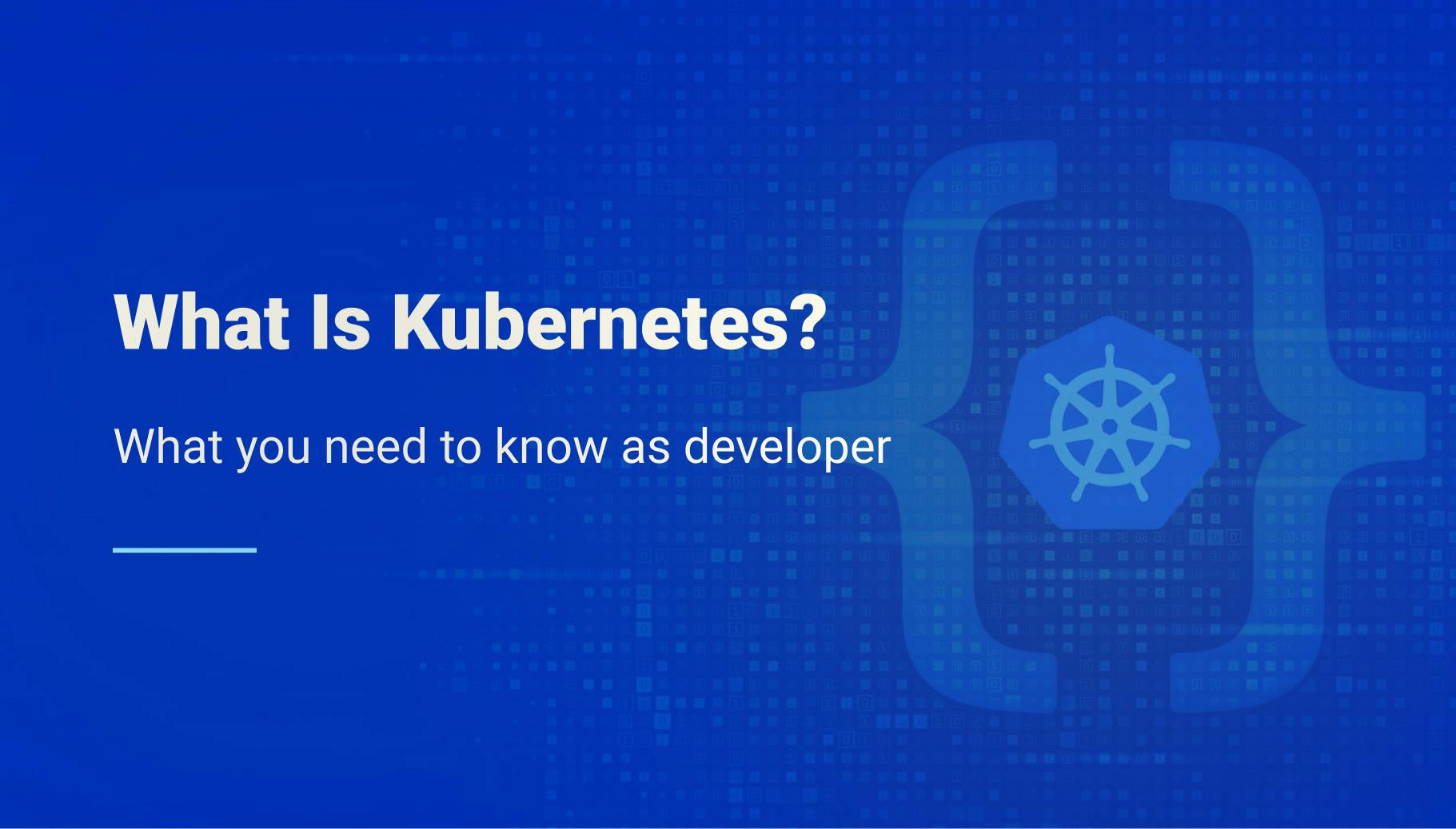
For a deeper dive into how Kubernetes is evolving to become more developer-friendly, check out our blog post on Turning Kubernetes into a Developer-Friendly Product.
#What is Kubernetes?
Kubernetes is an open-source platform designed to automate deploying, scaling, and operating application containers. It simplifies the developer's task of managing containerized applications. It solves many problems teams face during managment of containerized applications. Some of these challenges are as below:
#Challenges of Containerized Applications
Managing containerized applications, whether using Docker containers or some other containers runtime, comes with its own set of challenges, such as:
- Scalability: As the number of containers grows, it becomes challenging to scale them effectively.
- Complexity: Managing numerous containers, each with its own role in a larger application, adds complexity.
- Management: Keeping track of and maintaining these containers, ensuring they are updated and running smoothly, requires significant effort.
#Kubernetes as a Solution
Now that we have gone through the challenges of using containerized applications, let’s see how Kubernetes handle these challenges.
- Kubernetes steps in as a powerful platform to manage these complexities. It's an open-source system designed for automating deployment, scaling, and operation of application containers across clusters of hosts.
- It simplifies container management, allowing applications to run efficiently and consistently.
- Kubernetes orchestrates a container's lifecycle; it decides how and where the containers run, and manages their lifecycle based on the organization's policies.
Learn more about the role of Kubernetes in modern development in our article Why Kubernetes for Developers is the Next Big Thing.
#Benefits of Kubernetes
Some important benefits of Kubernetes are listed below:
- Efficiency: Kubernetes optimizes the use of hardware resources, saving costs.
- Reliability: It ensures that the application services are available to users without downtime.
- Flexibility and portability: Kubernetes supports diverse workloads, including stateless, stateful, and data-processing workloads. Its flexibility allows it to run on various platforms, from physical machines to cloud infrastructure.
- Security and resource management: It provides robust security features and efficient management of resources, ensuring that the infrastructure is secure and the resources are used optimally.
- Support for Docker and other container technologies: Kubernetes works well with Docker and other container technologies, offering a wide range of options for containerization.
- Open source community: Being open source, Kubernetes benefits from a large community of developers and users who contribute to its continuous improvement.
#Key Concepts
#Core Kubernetes components
Below are some core components of Kubernetes.
- Pods: The smallest deployable units created and managed by Kubernetes. A Pod represents a single instance of a running process in your cluster and can contain one or more containers.
- Nodes: These are worker machines in Kubernetes, which can be either a physical or virtual machine, depending on the cluster. Each node runs Pods and is managed by the master.
- Deployments: They describe the desired state of your application, like which images to use and the number of Pod replicas. Deployments update your application to the desired state at a controlled rate.
- Services: They are an abstract way to expose an application running on a set of Pods as a network service. This decouples workloads from specific Pods, providing a consistent way to access the application.
- Ingress: This manages external access to the services in a cluster, typically HTTP. Ingress can provide load balancing, SSL termination, and name-based virtual hosting.
- Namespaces: Namespaces help split a Kubernetes cluster into sub-clusters, making it possible to divide resources between different projects or teams.
- Labels and Selectors: They are powerful tools that allow you to organize and select subsets of objects, like Pods, based on key-value pairs for more precise resource management.
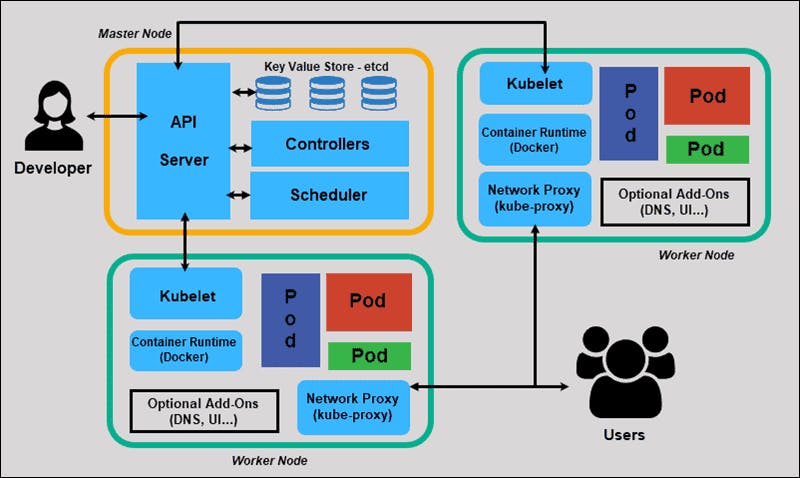
#How does Kubernetes achieve high availability?
- Control plane components: The control plane's components, including the kube-apiserver, etcd, kube-scheduler, and kube-controller-manager, work together to manage the cluster's state. Ensuring high availability of the control plane is crucial for production environments.
- Self-healing mechanisms: Kubernetes constantly checks the health of nodes and containers, restarting those that fail, replacing them, and killing those that don't respond to user-defined health checks.
#Real-world applications
Below are some example cases where developers can take advantage of Kubernetes to scale and manage their applications.
- In a typical cloud-based application, Pods run the application’s containers, often with Docker. These Pods are managed by Deployments to ensure the application runs efficiently.
- Nodes provide the necessary infrastructure and services to ensure that the application is accessible.
- Ingress controllers manage external traffic and direct it to the correct Services.
- Namespaces help in managing environments like development, testing, and production within the same cluster.
For practical insights on using Kubernetes with Qovery for developers, read our detailed guide at Kubernetes for Developers with Qovery
#Docker Vs. Kubernetes
It's common to see Docker and Kubernetes mentioned together, leading to some confusion. While they are related, they serve different purposes in the world of containerized applications. Let’s see how.
#The role of Docker in containerization
- Docker is pivotal for developers looking to containerize their applications, making it the go-to platform for creating containers.
- It simplifies the process of packaging an application, along with its environment, into a single container.
- This container can then be easily transported and run across different environments, ensuring consistency and reducing "it works on my machine" problems.
#Kubernetes: mastering container orchestration
- Kubernetes doesn't replace Docker but complements it by handling the orchestration of containers created by Docker.
- It addresses the challenge of running and connecting containers across multiple hosts, managing the complexities of high availability, and service discovery.
- Kubernetes is designed to respond to the dynamic nature of modern cloud environments, scaling up or down as needed and rolling out updates without downtime.
#Complementary, not competitive
- Docker and Kubernetes together form a powerful synergy for deploying applications.
- While Docker encapsulates the application's environment, Kubernetes intelligently manages the containers across a fleet of machines.
- Docker and Kubernetes are not competitors; they are complementary technologies that work together to streamline the development and deployment of applications.
- Kubernetes can orchestrate not only Docker containers but also containers from other runtimes, showcasing its versatility.
Check out our article that explains the difference between the two in detail https://www.qovery.com/blog/kubernetes-vs-docker-what-are-the-differences/
#Is Kubernetes a DevOps Tool?
Kubernetes is often mentioned in DevOps discussions, which leads to the misconception that it's a DevOps tool, although it is not. In reality, Kubernetes is more specialized than the broad suite of tools typically associated with DevOps.
#Kubernetes: A tool built for systems, not for people
Origins and engineering focus:
- Designed for systems engineers: Initially engineered for large-scale, containerized environments.
- Strengths: Excels in container lifecycle management, scaling, and high availability.
#Developers and Kubernetes: An Unavoidable Intersection
Shift in adoption:
- Becoming a standard: Despite being system-centric, Kubernetes is essential in modern container management.
- Mandatory understanding: Cloud-centric software delivery makes Kubernetes knowledge crucial for developers.
#Challenges for developers inadopting Kubernetes
Complex concepts:
- Unfamiliar concepts: Introduces concepts alien to typical developer workflows.
- Learning curve: Mastering these elements demands time and effort.
The "kubectl" barrier:
- Command-line complexity: kubectl requires more than basic command-line skills.
- Increased cognitive load: Understanding the impact of commands within Kubernetes adds complexity.
Deployment orchestration:
- Multi-step deployment process: Involves CI/CD pipelines, containerization, manifest creation, and network configuration.
- Focus shift: Deviates from the core objective of building and deploying efficiently.
#Qovery: How does it simplify Kubernetes for you?
#What is Qovery?
Qovery stands out as a managed Kubernetes platform, engineered specifically for developers. It aims to open up the powerful capabilities of Kubernetes to developers by simplifying the challenges involved. Developers can now leverage the benefits of Kubernetes, focusing on crafting applications, while Qovery handles the underlying container orchestration and cloud infrastructure complexities.
#Simplification of Kubernetes with Qovery
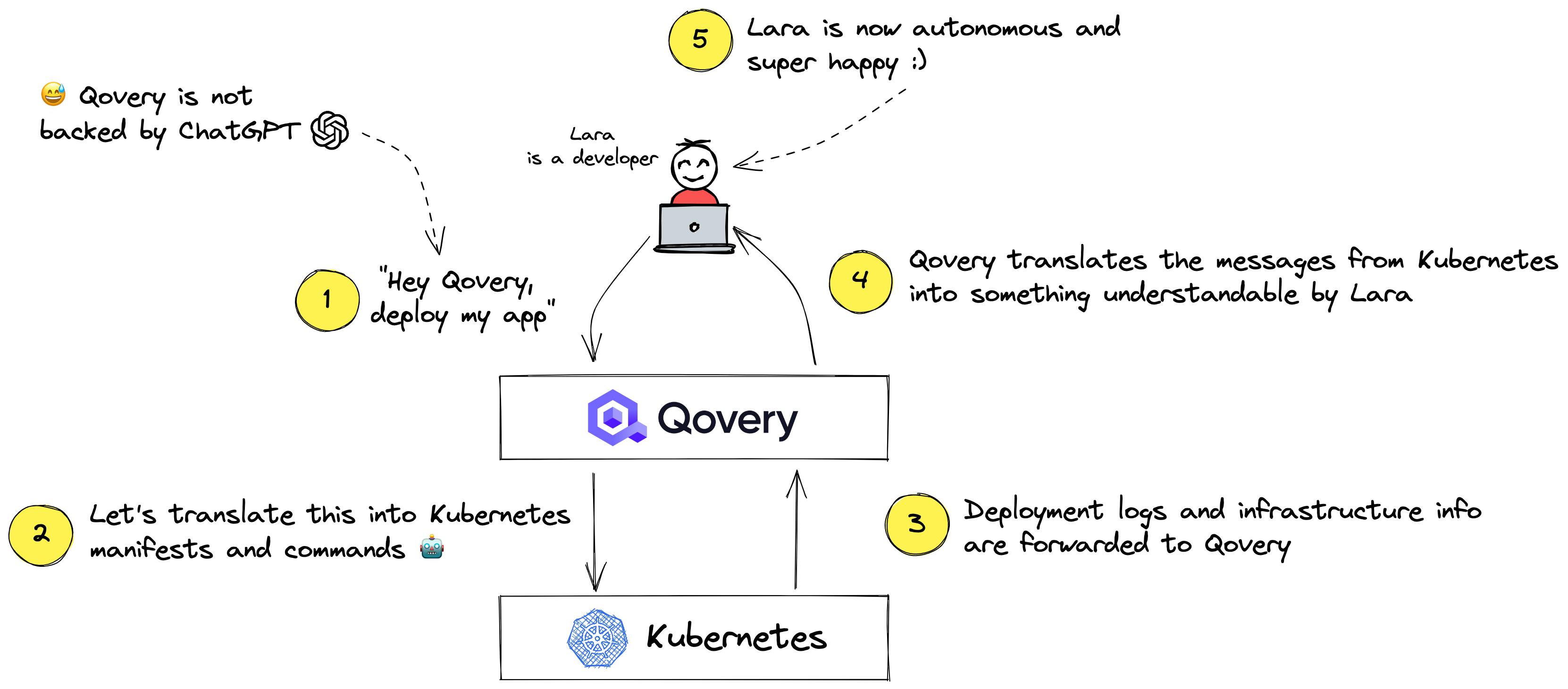
Qovery provides an automated approach to setting up and managing Kubernetes, eliminating the steep learning curve usually associated with it. With just a few clicks, Qovery sets up a Kubernetes cluster, configures the necessary resources, and prepares the environment for container deployment. It abstracts the underlying layers of Kubernetes, offering a straightforward interface that lets developers deploy and run applications without the need for deep Kubernetes expertise. The management of the Kubernetes infrastructure, including updates and patches, is taken care of by Qovery, allowing developers to concentrate on their core workloads.
#Features that empower developers
Some interesting features of Qovery in context of Kubernetes management are following:
1. Integrating into the developer environment
- Seamless integration: Qovery integrates with GitHub, GitLab, BitBucket, and various CI/CD platforms, along with a web interface, CLI, API, and a Terraform Provider.
- Automatic deployment: When developers push code to a branch in GitHub, Qovery automatically deploys the changes to the appropriate application in the right environment.
- Efficient workflow: Qovery's integration ensures a smooth workflow, automatically managing the deployment pipeline from building to deploying the application.

2. Infrastructure management
- Simplifying Kubernetes: Qovery acts as an intermediary layer, abstracting the complexities of Kubernetes for developers.
- Intuitive web interface: The interface translates developer actions into Kubernetes instructions, including resource allocation and domain management.
- Educational tools: Qovery's interface includes tooltips and explanations, aiding developers in understanding deployment processes.
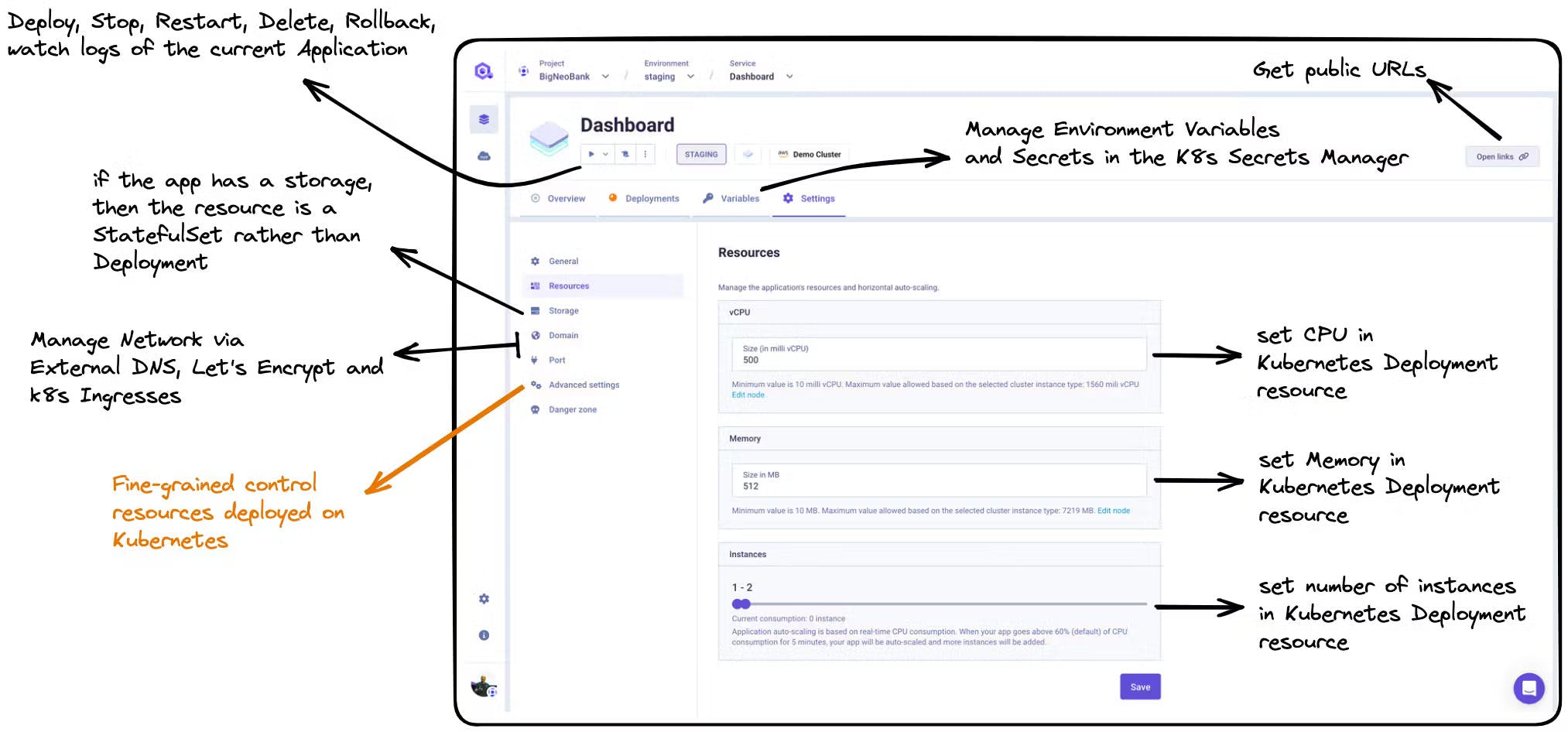
3. Balancing abstraction and control
- Advanced settings: Developers can modify advanced parameters for underlying resources, balancing simplicity with control.
- Empowering developers: The advanced settings allow for a deeper understanding of applications and troubleshooting capabilities.
4. Seamless integration of infrastructure and engineering
- Unified experience: Qovery merges infrastructure management and engineering, making developers more autonomous while keeping Ops in control of the infrastructure.
5. Continuous improvement and adaptation
- Direct engineering support: Offers hands-on assistance and gathers user feedback for product enhancement.
- Public roadmap: Showcases planned updates influenced by user feedback, aligning development with user needs.
- Regular changelogs: Keeps users informed about the latest improvements and features.
- Educational content: Shares insights and best practices, fostering a community and ensuring users feel valued.
#FAQ
#A. Can Kubernetes run on any platform?
Kubernetes is a versatile container management platform that can run on various platforms, including cloud, on-premises, and hybrid environments. This compatibility supports its widespread adoption and flexibility in managing diverse workloads.
#B. Can I use Kubernetes without using Docker?
Yes, Kubernetes is not exclusive to Docker. It's an open-source system that can manage various containers, providing the freedom to choose the container runtime that best fits your security and performance needs.
#C. Is Kubernetes only for large-scale applications?
Kubernetes efficiently manages applications of any size. It is designed to scale with your infrastructure, making it suitable for both small startups and large enterprises.
#D. Is Kubernetes only for microservices-based applications?
While Kubernetes excels in handling microservices architectures, it's not limited to them. You can manage monolithic applications, batch jobs, and other types of workloads, leveraging Kubernetes for its robust service management features.
#E. How does Kubernetes improve application security?
Kubernetes strengthens security by automating updates and patches, managing secrets efficiently, and isolating different workloads within the cluster. These measures help maintain the integrity and confidentiality of applications.
#F. Can Kubernetes manage stateful applications?
Yes, Kubernetes can manage stateful applications through persistent storage options, StatefulSets, and robust data management capabilities, ensuring that your applications run smoothly and maintain their state as required.
#G. Is Kubernetes considered complex?
Kubernetes is acknowledged for its steep learning curve, primarily due to the complexity of container orchestration, cluster management, and network configuration. However, platforms like Qovery streamline the Kubernetes experience, abstracting the complexity so developers can focus on deploying and managing applications without getting bogged down by the complexities of Kubernetes infrastructure.
#Conclusion
Kubernetes unlocks the immense potential of containerized applications. It conquers scalability challenges, boosts reliability, and offers unparalleled flexibility. Choosing a platform like Qovery further simplifies Kubernetes, empowering developers to build and deploy containerized wonders without getting tangled in the underlying complexity. So, embrace Kubernetes and watch your containerized dreams take flight by trying Qovery for free >>
Your Favorite Internal Developer Platform
Qovery is an Internal Developer Platform Helping 50.000+ Developers and Platform Engineers To Ship Faster.
Try it out now!

Your Favorite Internal Developer Platform
Qovery is an Internal Developer Platform Helping 50.000+ Developers and Platform Engineers To Ship Faster.
Try it out now!
